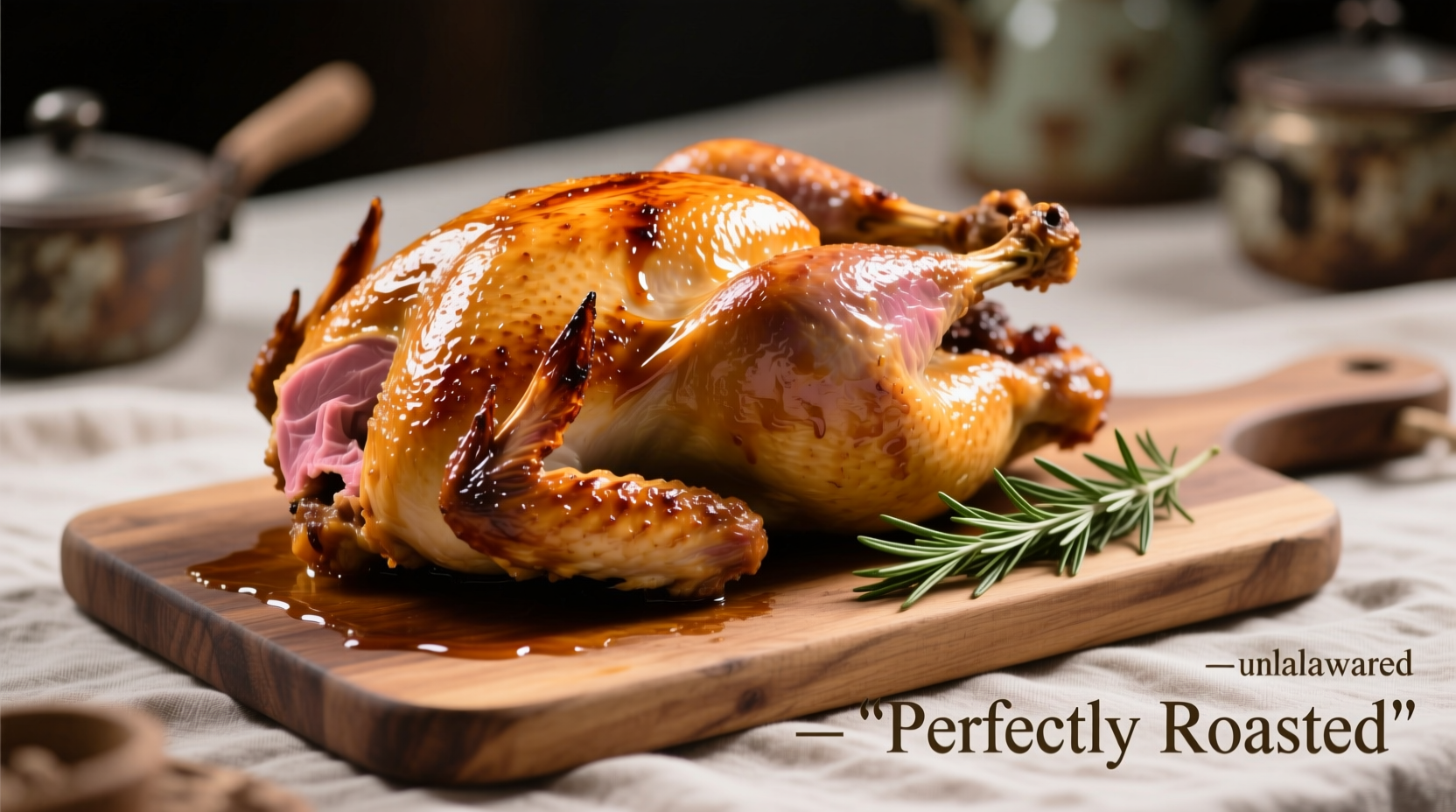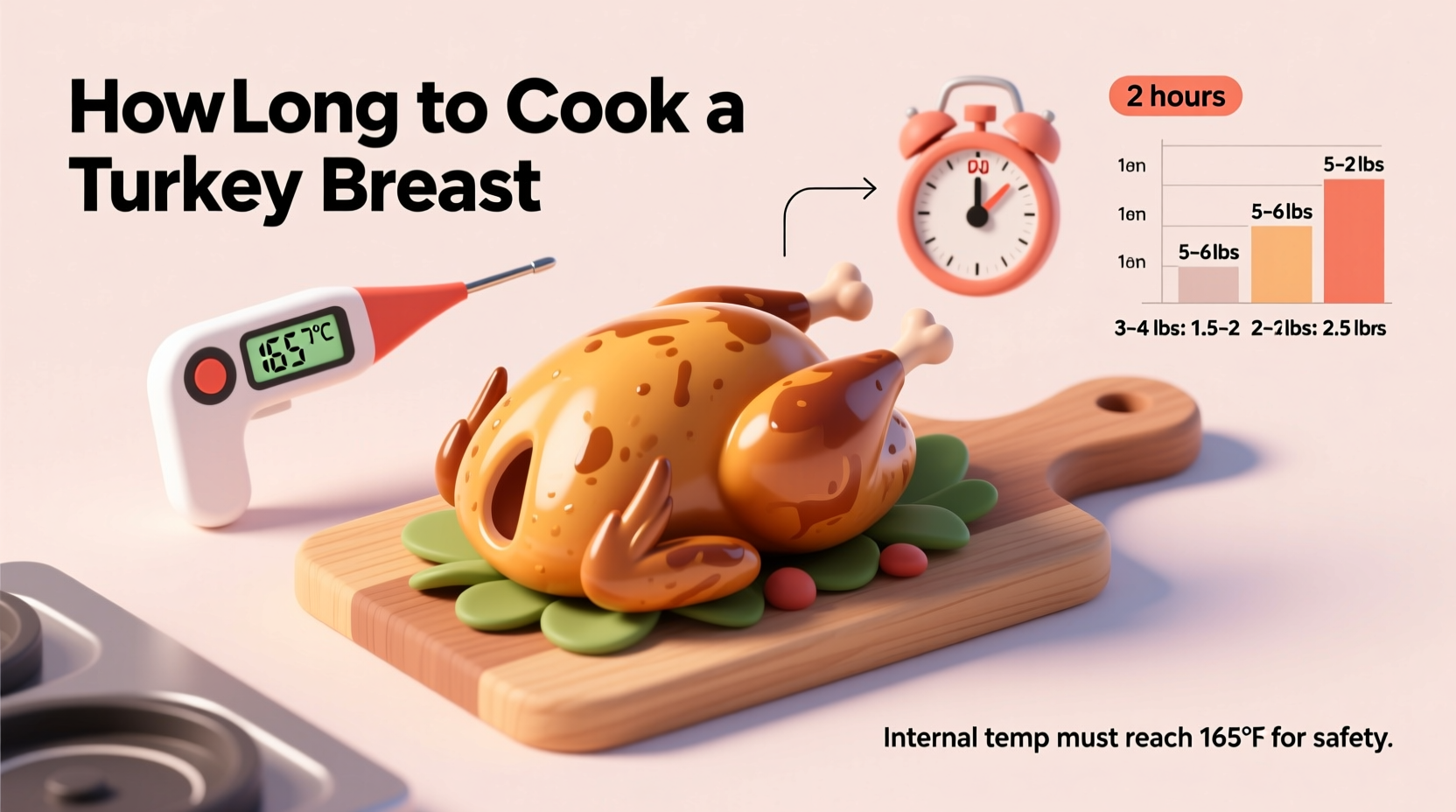For a standard 3-4 pound boneless turkey breast cooked at 325°F, expect 1½ to 2 hours of cooking time. The critical factor is internal temperature – your turkey breast is safely cooked when it reaches 165°F (73.9°C) in the thickest part, as verified by the USDA Food Safety and Inspection Service. Actual cooking time varies based on size, oven accuracy, and cooking method.
Nothing beats the aroma of a perfectly roasted turkey breast filling your kitchen. Whether you're preparing a special holiday meal or a simple weeknight dinner, understanding the precise cooking time ensures juicy, flavorful results every time. This comprehensive guide eliminates guesswork with science-backed timing, professional techniques, and essential safety information – all verified by food safety authorities.
Why Cooking Time Varies: Key Factors You Must Consider
That "20 minutes per pound" rule you've heard? It's dangerously oversimplified. Professional chefs know turkey breast cooking time depends on multiple interconnected factors:
- Weight and thickness – A 2-pound breast cooks significantly faster than a 6-pound cut
- Oven temperature accuracy – Most home ovens vary by ±25°F; use an independent oven thermometer
- Bone-in vs. boneless – Bone-in breasts require 25-30% more time
- Starting temperature – Room-temperature meat cooks more evenly than refrigerator-cold
- Roasting method – Spatchcocking cuts time by 30-40% compared to traditional roasting
| Turkey Breast Weight | Recommended Oven Temp | Approximate Cooking Time | Resting Time |
|---|---|---|---|
| 2-3 lbs (boneless) | 325°F (163°C) | 60-90 minutes | 15 minutes |
| 3-4 lbs (boneless) | 325°F (163°C) | 90-120 minutes | 20 minutes |
| 4-5 lbs (bone-in) | 325°F (163°C) | 120-150 minutes | 20-25 minutes |
| Spatchcocked (any size) | 400°F (204°C) | 45-75 minutes | 15 minutes |
Note: These times assume starting with refrigerated meat. Always verify with a meat thermometer regardless of elapsed time.
The Only Metric That Matters: Internal Temperature
According to the USDA Food Safety and Inspection Service, turkey must reach 165°F (73.9°C) to eliminate harmful bacteria like salmonella. This critical food safety standard overrides any timer-based recommendations.
Insert your thermometer into the thickest part of the breast, avoiding bones or stuffing. Check temperature 20-30 minutes before expected completion time. Remember that turkey continues cooking during resting – remove it from oven at 160°F to reach 165°F after resting.

Step-by-Step Cooking Process: From Fridge to Feast
Follow this professional-tested sequence for consistently excellent results:
- Preparation (1 hour before cooking): Remove turkey from refrigerator. Pat completely dry with paper towels. Season generously, then let sit uncovered to develop skin crispness.
- Oven setup: Preheat to 325°F with rack in center position. Place oven thermometer away from turkey to verify actual temperature.
- Cooking phase: Roast breast-side up on rack in shallow pan. Baste only during last 30 minutes to prevent skin sogginess.
- Temperature monitoring: Begin checking temperature 20 minutes before expected finish time. Check every 10-15 minutes thereafter.
- Resting period: Transfer to cutting board, tent loosely with foil, and rest 15-20 minutes. This allows juices to redistribute.
Avoid These Common Turkey Breast Mistakes
Even experienced cooks make these critical errors that lead to dry, unevenly cooked turkey:
- Not using a thermometer – Visual cues alone can't verify safety
- Over-basting – Opening oven frequently drops temperature significantly
- Cutting too soon – Resting time is non-negotiable for juicy results
- Cooking straight from freezer – Requires 50% more time and risks uneven cooking
- Ignoring oven hot spots – Rotate pan halfway through cooking for even browning
Advanced Techniques for Perfect Results
Professional kitchens use these methods to guarantee moist, flavorful turkey every time:
Dry brining: Rub 1 tablespoon kosher salt per 5 pounds of turkey 24 hours before cooking. This seasons throughout and improves moisture retention.
Spatchcocking: Remove backbone and flatten turkey. Cuts cooking time by nearly half while ensuring even cooking. Ideal for weeknight meals.
Temperature-controlled roasting: Start at 425°F for 20 minutes to crisp skin, then reduce to 325°F until target temperature reached.
When Things Go Wrong: Troubleshooting Guide
Encountering issues? These solutions come from decades of professional kitchen experience:
- Turkey cooking too fast: Reduce oven temperature by 25°F and tent loosely with foil
- Skin browning too quickly: Create a foil collar around breast area while allowing ends to brown
- Uneven cooking: Rotate pan 180° halfway through cooking time
- Overcooked turkey: Slice against the grain and serve with gravy or pan juices to restore moisture
Storing and Reheating Leftovers Safely
Proper handling prevents foodborne illness. The USDA recommends:
- Cool leftovers within 2 hours of cooking
- Store in shallow containers for rapid cooling
- Consume within 3-4 days or freeze for up to 4 months
- Reheat to 165°F before serving
Frequently Asked Questions
Can I cook a frozen turkey breast without thawing?
Yes, but it requires approximately 50% more cooking time. Never cook a frozen turkey breast in a slow cooker, as it spends too long in the danger zone (40°F-140°F) where bacteria multiply rapidly. Always verify internal temperature reaches 165°F.
Why is my turkey breast always dry even when I follow cooking times?
Dry turkey usually results from overcooking. Oven temperatures vary significantly, so time-based methods are unreliable. Always use a meat thermometer and remove turkey at 160°F, as carryover cooking will bring it to 165°F during resting. Dry brining 24 hours beforehand also dramatically improves moisture retention.
How long should I let turkey breast rest before carving?
Rest turkey breast for 15-20 minutes, covered loosely with foil. This critical step allows juices to redistribute throughout the meat. Cutting too soon releases precious juices onto your cutting board rather than staying in the meat. Larger breasts (over 4 pounds) benefit from the full 20-minute rest.
What's the fastest way to cook a turkey breast without sacrificing quality?
Spatchcocking (removing the backbone and flattening the bird) cuts cooking time by 30-40% while promoting even cooking. Roast at 400°F for 45-75 minutes depending on size. This method produces crisp skin and perfectly cooked meat throughout, making it ideal for weeknight meals when time is limited.
Can I use a higher oven temperature to reduce cooking time?
Yes, but with caution. Starting at 425°F for 20 minutes then reducing to 325°F creates excellent skin browning while preventing overcooking. Never exceed 450°F, as this risks burning the exterior before interior reaches safe temperature. Always monitor internal temperature regardless of oven setting.











 浙公网安备
33010002000092号
浙公网安备
33010002000092号 浙B2-20120091-4
浙B2-20120091-4